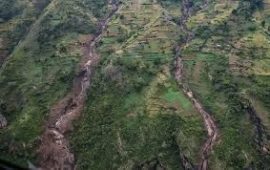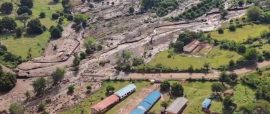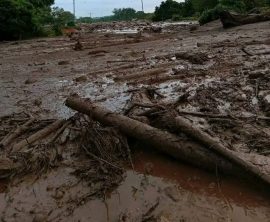In the past weeks, the people of Elgeyo Marakwet County have faced one of the most devastating natural disasters in recent memory. Relentless rains triggered a series of landslides and mudslides across Chesongoch, Embobut, Endo, and Sambirir, sweeping away homes, farms, and schools.
Entire villages have been left in mourning. Dozens of lives have been lost, and many others remain missing. Roads and bridges have collapsed, cutting off communities from essential rescue and relief services.
The Kenya Red Cross, national disaster response teams, and local volunteers non-profits and community groups – including our team have been working tirelessly to recover bodies and provide aid. For the families affected, the pain is beyond words. And yet, even as the floodwaters recede, one truth rises to the surface: this is not just a natural disaster, it is a climate crisis made visible.
This land can no longer hold


When the rains come now, they no longer soak gently into the soil. Instead, they gather speed, carving through bare hillsides and carrying with them everything in their path.
The county’s own climate action plan warns of this growing threat: heavy rainfall and loss of vegetation have made landslides more frequent and more severe. Communities living along unstable slopes face the greatest risk, often with no safe alternatives for relocation.
The Climate Connection: The landslides in Elgeyo Marakwet are a painful reminder of how climate change is reshaping local realities. What used to be predictable rainy seasons are now marked by sudden downpours and long dry spells. The balance between water, soil, and vegetation, which was once steady, is severely breaking down.
This tragedy is not isolated. It echoes across Kenya’s highlands and valleys, from Murang’a to West Pokot, where rainfall patterns have become more intense and destructive. We cannot afford to treat such events as random or unavoidable. They are signals of an urgent truth; indeed our ecosystems are calling for healing.

Image courtesy of EMC media centre
Across the county, community-led restoration initiatives have already begun to make a difference. In the Spencer Line and the wider Elgeyo Hills, local groups have planted tens of thousands of trees, restored degraded slopes, and encouraged sustainable farming practices. These are not just environmental projects—they are acts of resilience.
Each seedling planted strengthens the soil, reduces runoff, and helps the landscape regain its ability to protect those who live upon it.

Image courtesy of EMC media centre
Landscape restoration, reforestation, and climate adaptation efforts must now take center stage—not only to recover from this disaster but to prevent the next one.